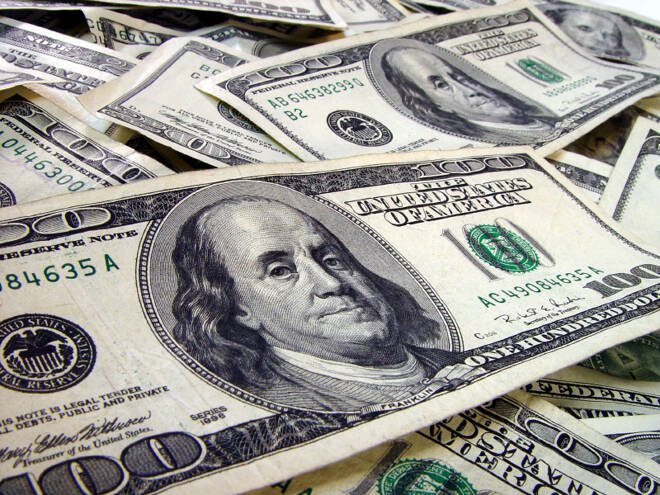Advertisement
Advertisement
U.S. Dollar Tumbles after Yields Fall as Fed Moves Closer to End of Rate Hike Cycle
By:
The U.S. Dollar retreated from two-week highs and nearly its highest level of the year as short-term Treasury yields fell, following dovish comments from Fed Chair Jerome Powell which raised expectations that the U.S. central bank is closer to the end of its rate hike cycle.
Stocks jumped and yields slipped Wednesday after U.S. Federal Reserve Chair Jerome Powell said he thinks the central bank’s benchmark overnight interest rate is “just below” a neutral level. The drop in yields was most significant to the Forex markets because it made the U.S. Dollar a less-desirable asset, leading to a loss of greater than 0.57%.
U.S. Treasury Markets
“Interest rates are still low by historical standards, and they remain just below the broad range of estimates of the level that would be neutral for the economy – that is, neither speeding up nor slowing down growth,” Powell told the Economic Club of New York.
In the cash market at 2039 GMT, the yield on the benchmark 10-year Treasury note was trading 3.055 percent, down 0.002, while the yield on the 30-year Treasury bond climbed to 3.343 percent, up 0.0023. The 2-year Treasury note yield, which is impacted to a greater extent by changes in Fed policy, dropped 4 basis points to 2.799 percent before climbing back to 2.811 percent, down 0.02.
Impact on Yield Curve
The plunge in the short-term rates contributed to a steeping of the yield curve. The spread between the 2-year yield and the 10-year yield rose to 24 basis points from recent lows near 20.
U.S. Dollar
The U.S. Dollar retreated from two-week highs and nearly its highest level of the year as short-term Treasury yields fell, following dovish comments from Fed Chair Jerome Powell which raised expectations that the U.S. central bank is closer to the end of its rate hike cycle.
Powell said the policy rate, at 2-2.25 percent, is now “just below” the broad range of estimates of neutral, which in September was 2.5-3.5 percent. His new remarks were a contrast with comments on October 3 when Powell said the Fed might raise rates past neutral, adding at that time that they are probably “a long way” from that point.
The strength in the greenback has been questioned lately due to signs that the Fed might reduce the pace of rate increases amid slowing global growth, peak corporate earnings and the escalating trade tensions. Some say the selling should have started weeks ago, but stock market volatility was propping it due to safe-haven buying.
Today, lower yields made the dollar less-appealing to investors, while the huge gains in the U.S. stock markets encouraged long investors to take profits and pare positions bought for safe-haven reasons.
About the Author
James Hyerczykauthor
James is a Florida-based technical analyst, market researcher, educator and trader with 35+ years of experience. He is an expert in the area of patterns, price and time analysis as it applies to futures, Forex, and stocks.
Did you find this article useful?
Latest news and analysis
Advertisement
